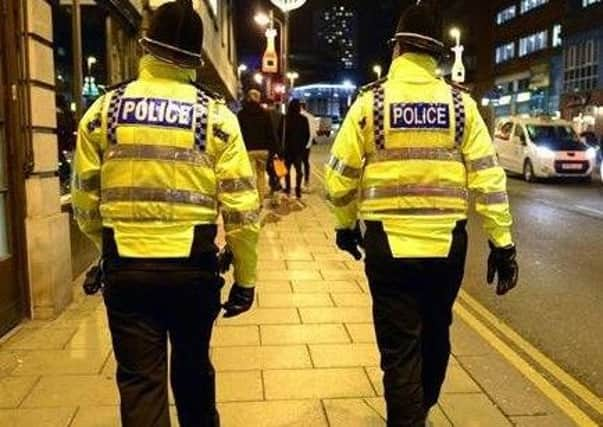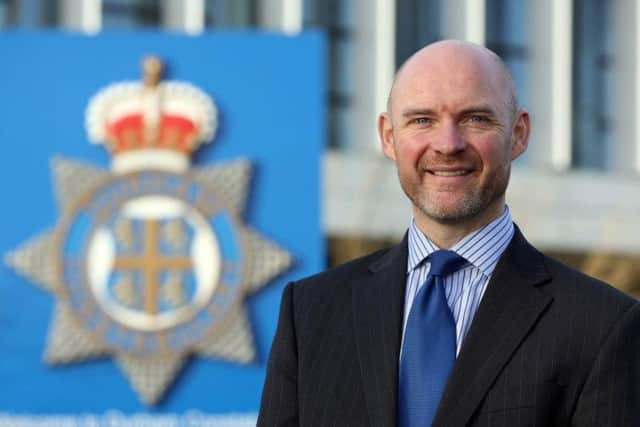Number of beat bobbies falls as budget cuts hit


The new figures show that Cleveland Police had 1,282 officers in total last year, compared to 1,528 in 2012.
Of those, 161 were neighbourhood officers, while the total of Police Community Support Officers (PCSOs) was 125, with 119 of those neighbourhood PCSOs.
Advertisement
Hide AdAdvertisement
Hide Ad

Compared to 2012, that is a reduction of -246.31 or -16.11% in the overall number of officers and within that figure, the number of neighbourhood officers stands at -66.22 or -29.06%.
The difference in neighbourhood officers and PCSOs between the five-year stretch is -114.6 or -28.99%, while the difference in neighbourhood PCSOs numbers from 2012 to 2017 stands at is -28.91%.
The information, complied by the BBC, also shows the number of officers per 1,000 people stands at 0.5, with a population, as of 2016, of 564,300.
The figures put it in 15th place.


However, the force, has challenged the accuracy of the numbers as it says they did not include vacant posts.
Advertisement
Hide AdAdvertisement
Hide AdIts numbers show a slight change in the number of total officers of one role, with 1,529 in 2012 compared to 1,282 last year, a drop of 246 officers or -16.1%.
In terms of neighbourhood officers, it says it had 228 neighbourhood officers five years ago, compared to 173 last year, a change of 55 people or -24%.
The number of officers and PCSOs stood at 395 compared to 321 now, down by 74 or 18.4%, and the number of PCSOs, has gone from 167 in 2012 to 148 on the books in 2017, a change of 19, or -11.4%.
Chief Superintendent Alastair Simpson said: “Neighbourhood policing, like all policing, has seen reductions due to austerity over the last few years. The Force has had to lose almost 500 officers since 2010, set against a climate of increasing demand and complexity across policing, so it is inevitable that neighbourhood teams have been reduced.
Advertisement
Hide AdAdvertisement
Hide Ad“However, Neighbourhood policing remains central to the force approach and the force adopted a structured approach to managing these reductions, allowing us to focus the most resources in the communities that are most vulnerable to crime and disorder.
“Cleveland Police has excellent neighbourhood officers working hard with our communities every day, listening to and engaging with local people and addressing crime and disorder issues through a problem solving approach.
“We have been supported in the protection of neighbourhood assets by the Police and Crime Commissioner who funded additional PCSO’s who are now working with communities across the area.”
The BBC data shows that in Durham Constabulary, as of last year, it had 1,144 officers in total and of those, 146 were neighbourhood officers.
Advertisement
Hide AdAdvertisement
Hide AdThe total of PCSOs stood at 141.87 and of those, 124.96 were neighbourhood PCSOs.
Set against the stats for 2012, they show a reduction of -219.11 or -16.07% in total officers.
Within its neighbourhood teams, officer numbers stood at -21.02 or -12.57% and the difference in neighbourhood officers and PCSOs was -38.38 or -12.40%.
The difference in neighbourhood PCSOs between 2012 to 2017 is -12.20%.
Advertisement
Hide AdAdvertisement
Hide AdThe details also show the number of officers per 1,000 people stood at 0.43, with a population, as of 2016, of 627,800.
It is placed 20th in the league.
Gary Ridley, the force’s assistant chief officer, said: “Officer numbers in Durham Constabulary have fallen as a result of government austerity.
“However, we expect the figures to be stable for the next two to three years, which is good news for the people of County Durham and Darlington.”
In response to the figures, a Home Office spokesperson said: “The independent Office for National Statistics is clear that overall traditional crime is continuing to fall, and is now down by almost 40% since 2010, while fraud and computer misuse - the most commonly experienced crime - has reduced by 15% in the past year.
Advertisement
Hide AdAdvertisement
Hide Ad“We know the nature of crime is changing, and we’ve spoken to every police force in the country to understand the demands they are facing.
“In December, we set out a comprehensive settlement to strengthen local and national policing, which will mean police funding will increase by up to £450 million next year.
“We are clear that effective local policing needs to be about more than just visibility in isolation.
“With crime increasingly taking place behind closed doors and online it is also about safeguarding vulnerable groups or individuals and giving the police the powers they need to deal with emerging and hidden crimes.”